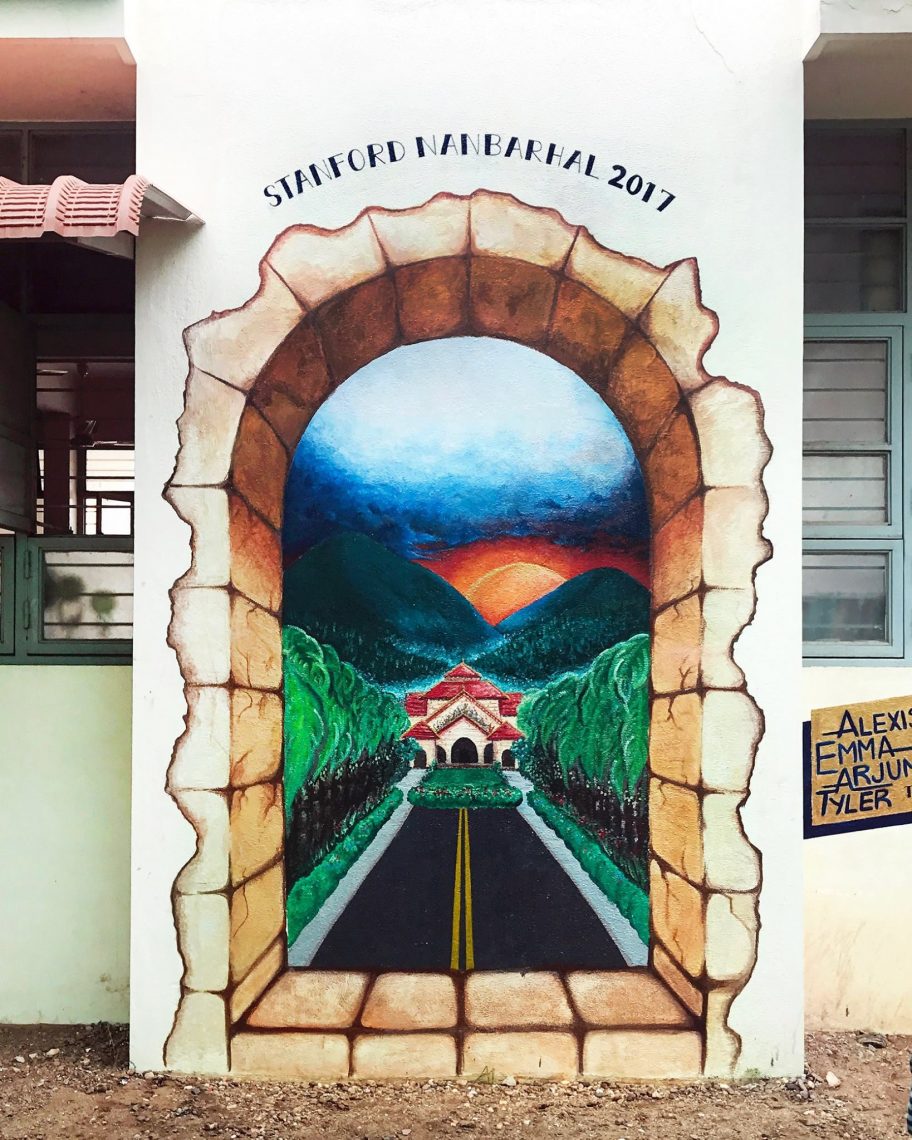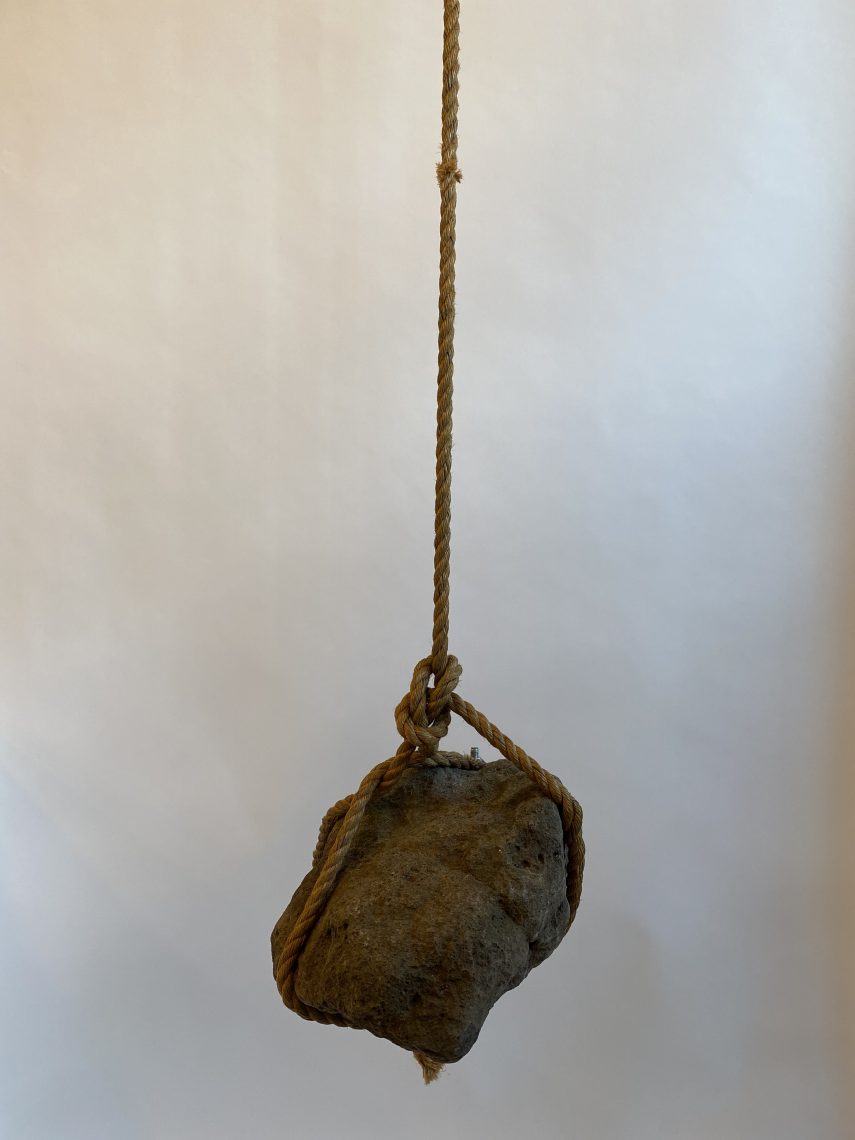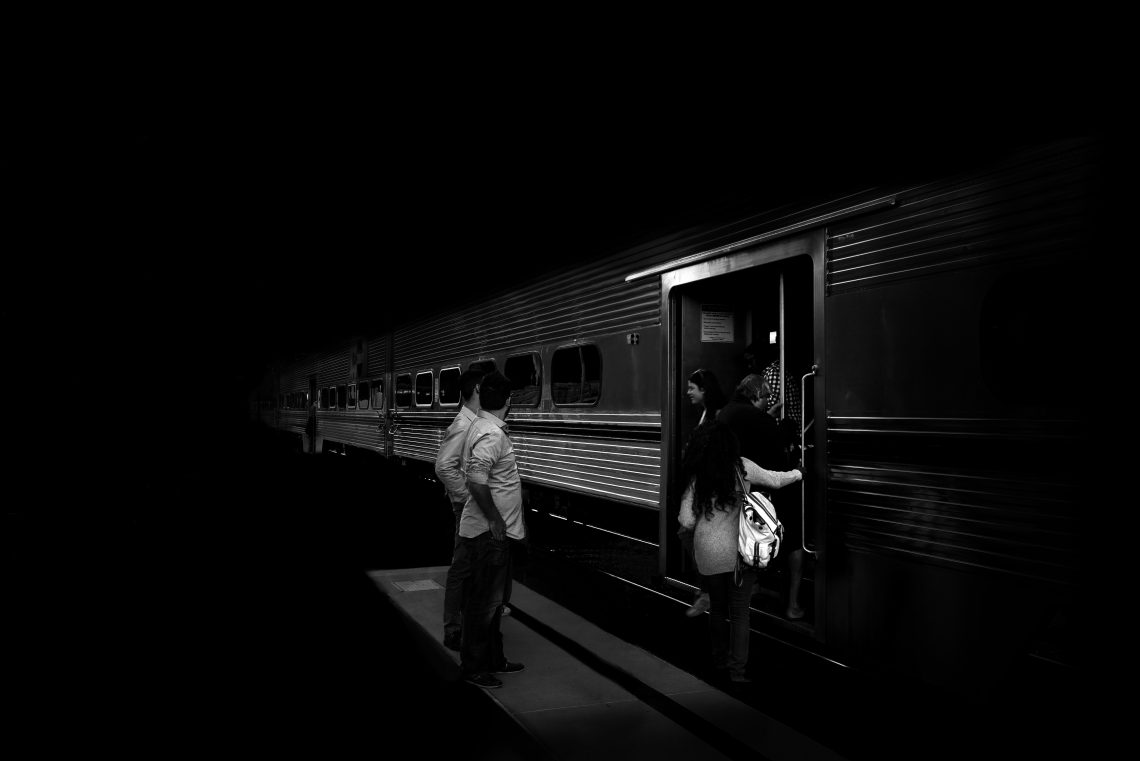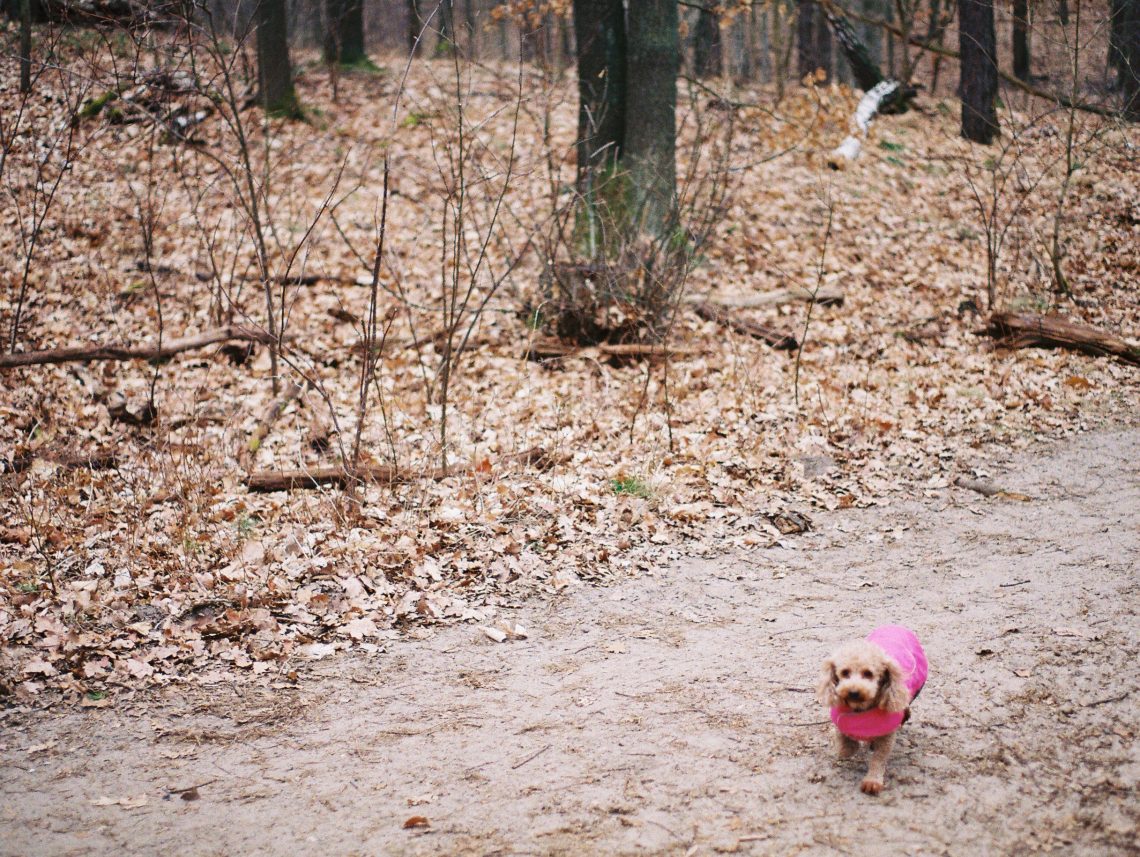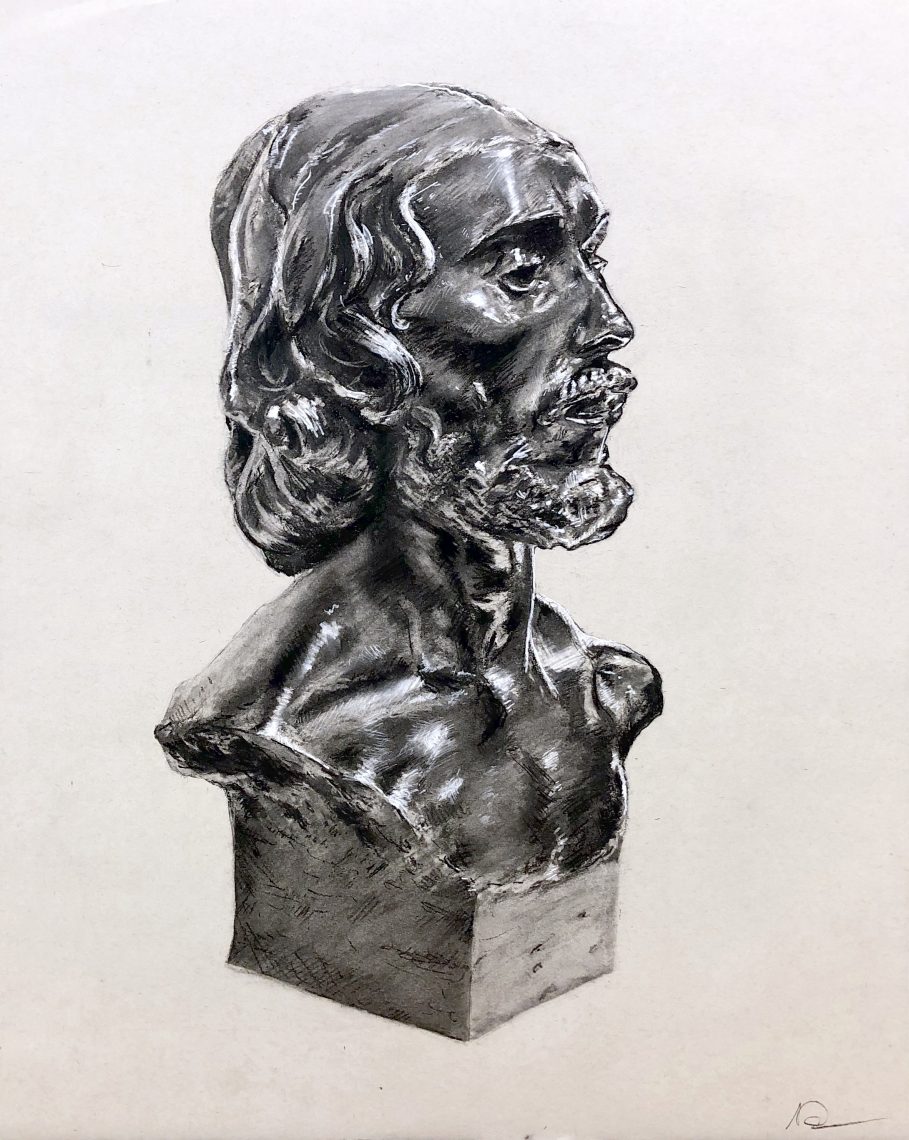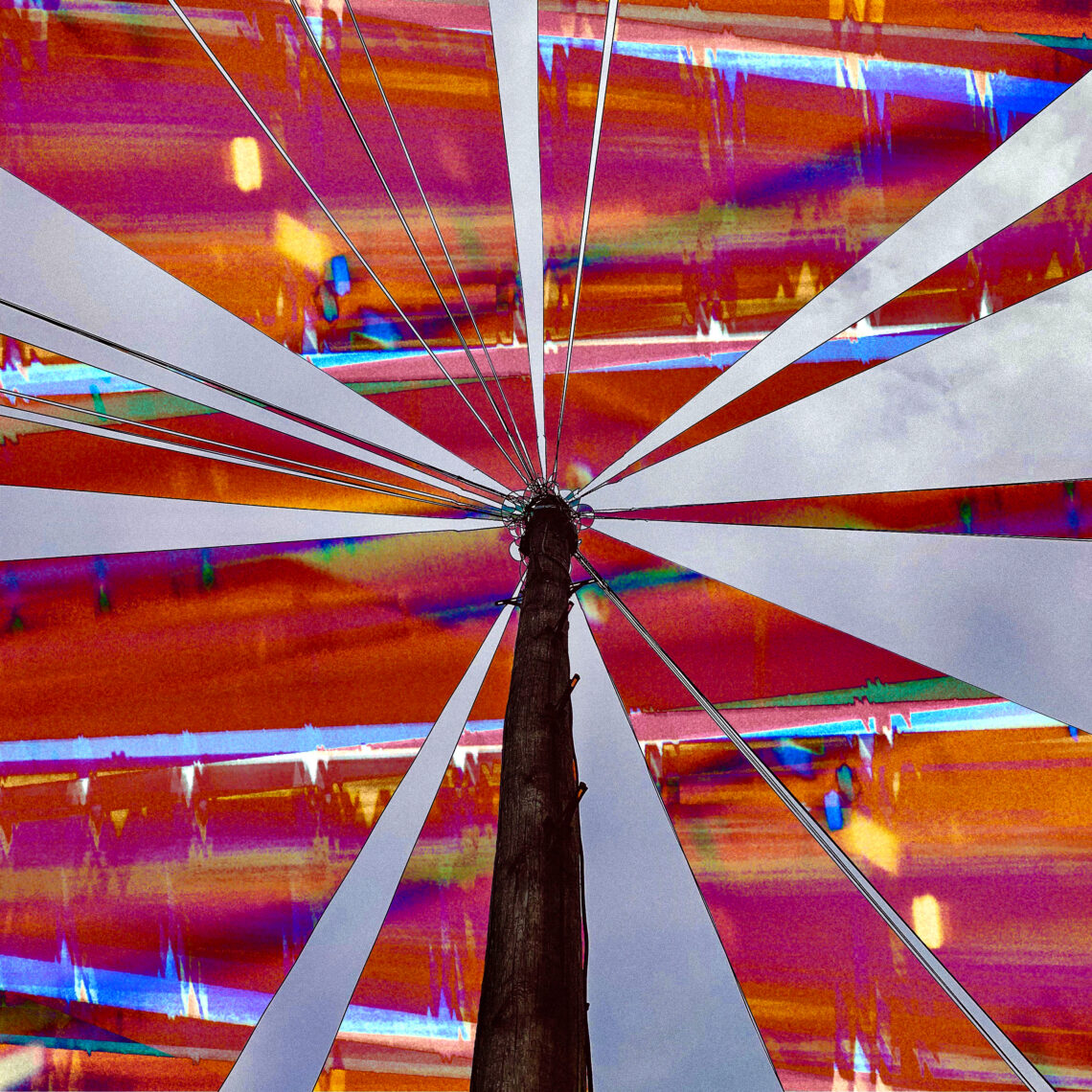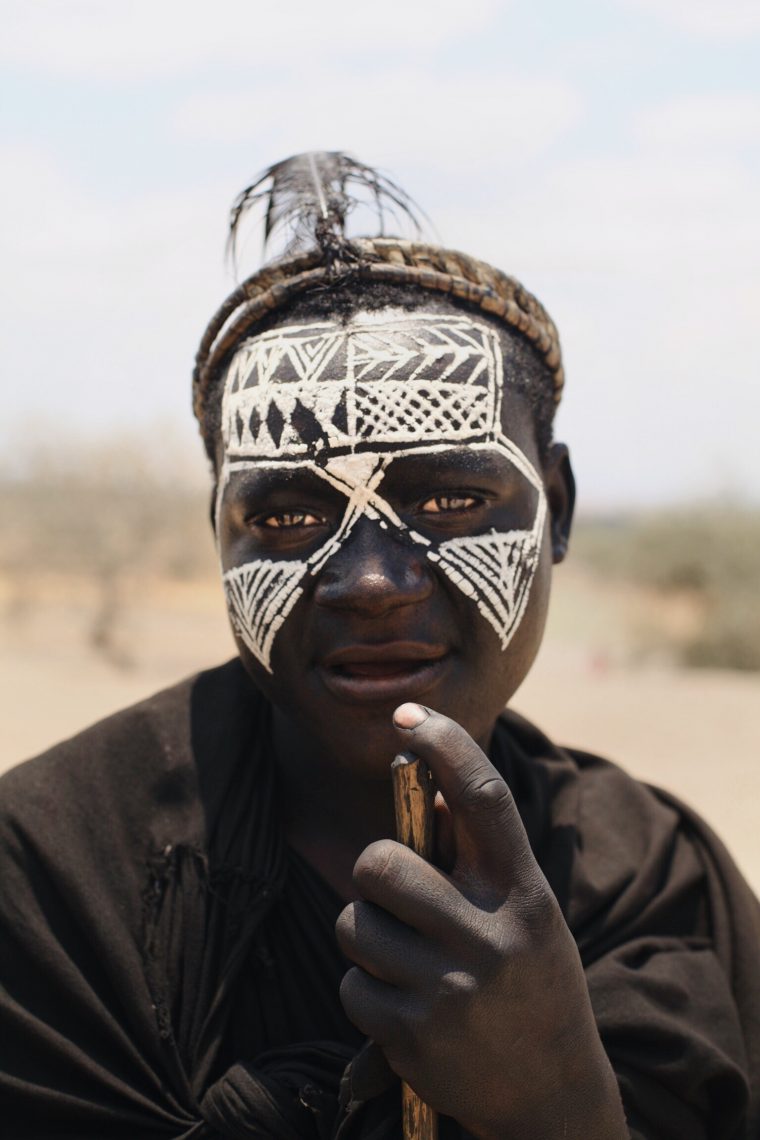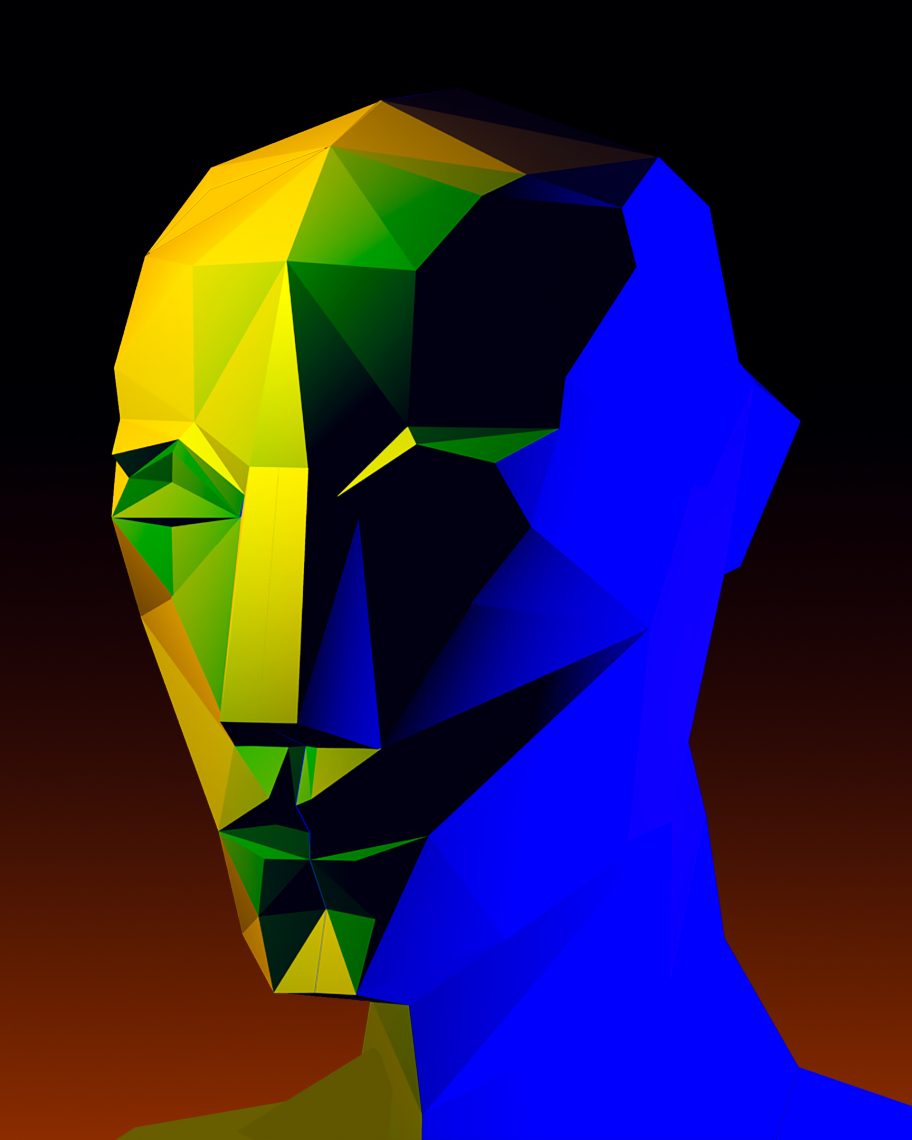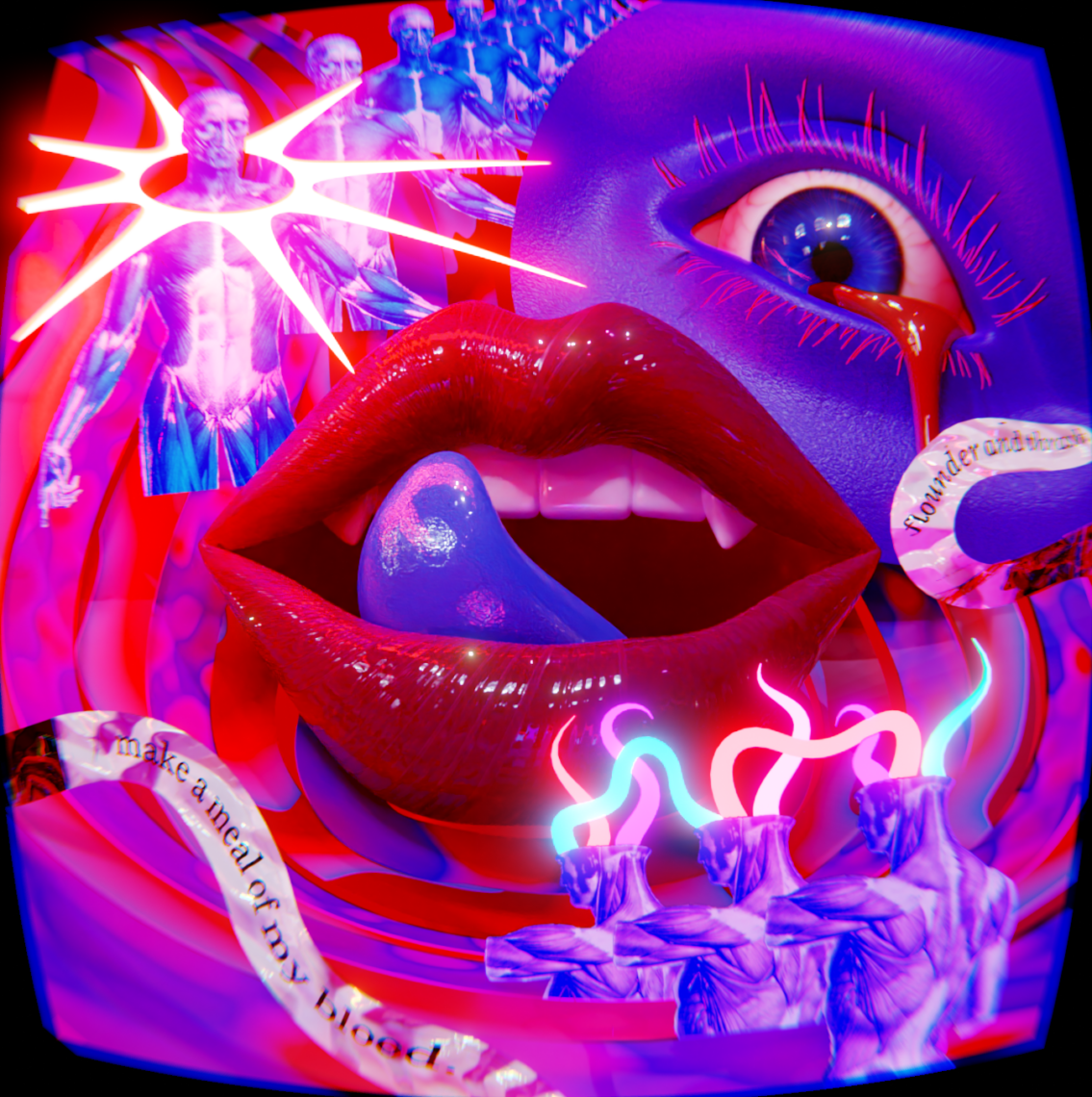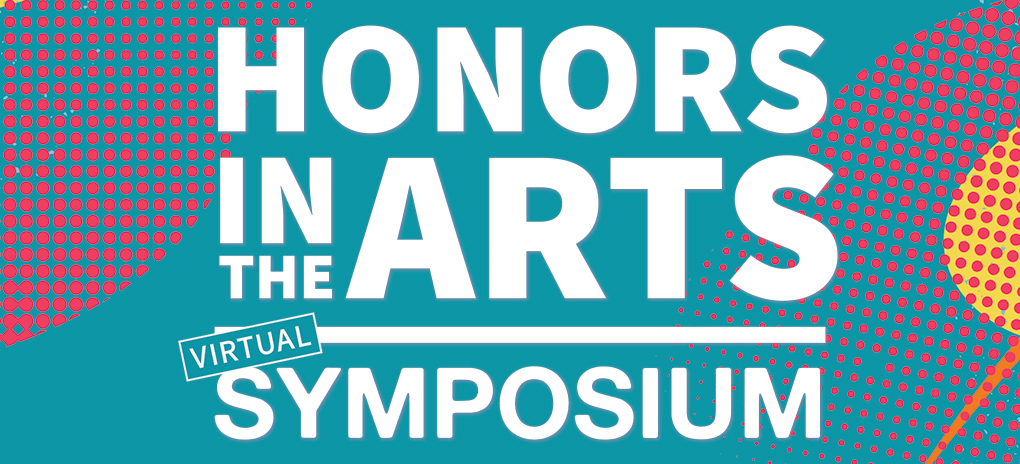
Celebrate the work of the 2023-24 Honors in the Arts Cohort
The nineteen student artists in the 2023-24 cohort have spent the academic year creating deeply innovative and interdisciplinary projects across a wide spectrum of media: screenwriting and film, poetry, fiction and creative non-fiction, podcasts, music and sound composition, graphics, photography, installation, and mixed media.
In addition to a public exhibition of project held on Friday, June 7, video essays created by these student artists about their capstone projects are posted below.
(un)HOLY BODIES (film)
IJEOMA ALOZIE , BA Communication
What is your relationship to your body? Your relationship to other bodies? The relationship your body has to itself? What has influenced these relationships?
(un)HOLY BODIES is an experimental short film that explores these questions through a Black fat queer lens. Drawing inspiration from my own body’s relationship with medical institutions and religion, I reflect on how these influences have shaped the way I view both my own body and others’. This film is a reclamation of these experiences and a call to action for viewers to reflect as well. It asks us to consider what exactly we envision when we think of a body that is (un)holy, and why.
Dahil Sa’yo (film)
ISABELLA ANDAYA, BA Film & Media Studies
When my parents traversed the water and the risks between the Philippines and America, they gambled certainty for the chance that their children could touch the sky.
In this short film, I explore the sacrifices after The Sacrifice within the immigrant experience. Mustering the lived realities of my parents, myself, and others, Dahil Sa’yo sheds light on the distinctly quiet and sacrificial nature of an “immigrant parent” love; it renders visible the burdens our parents selflessly carry and reminds us of a simple yet often forgotten fact: their idea of home differs from ours.
Over the course of my senior year, I lovingly and with humbled awe build this film to completion for my parents, who – with inexhaustible love and humility – have spent their lives building me to the greatest heights: this is my way of thanking you, of recognizing your sacrifice while admitting that I do not (and likely will never) know the full extent of it. But it is in learning of your decision to give me everything that I realized your love is all I need.
GOBI DUST: A Geomorphology of Belonging (creative nonfiction)
KEONA BLANKS, BS Earth Systems
Suppose I were to tell you that if you dug your hand into Kaua‘i’s chalky soil, dust from the Gobi desert could be found under your russet finger nails. Suppose I told you that this dust were infused in the water raining down upon you at that very moment. Suppose I looked up and saw myself in that great dust cloud, made up of watercolor strokes that brushed upon the Asian continent itself. GOBI DUST: A Geomorphology of Belonging is a work of creative nonfiction that explores the question of whether home can be found as a settler in a late-colonial world. Through a hybrid of prose and poetry, I search for answers in the living earth beneath my upbringing as a second-generation Japanese-American settler in Hawaii. At the nexus of decolonial studies and the Earth sciences, the book-length piece weaves together lyric essays on Hawaii’s geomorphology, ethnographies of Hawaii’s settler and Indigenous inhabitants, and journal entries from days spent on the Hawaiian Kingdom’s russet shores.
the True Crime Podcast Podcast (podcast)
GRACE CARROLL & KYLEIGH McPEEK, BA English | BA Psychology
For the past year, we’ve become personally obsessed with the inscrutable world of True Crime podcasting. Or, if you want to get into the specifics – and apparently, we do – we've become obsessed with trying to understand why people make careers out of talking about homicide, and why even more people walk around with their headphones blasting horrific details of kidnappings; why some podcasts can help solve murder cases, and why other podcasts seem to be slowly corroding the sanctity of the American legal system. Is the modern True Crime podcast just voyeuristic murder porn, or a prescient public safety warning? Is it a subversive mechanism for holding power to account, or unchecked TikTok mob-rule? Is this what happens when an unregulated new medium meets a storytelling tradition as old as humanity itself?
We aren't detectives or crime reporters. We aren't really even true crime podcasters. But yes, we've spent the past year talking to lawyers and journalists, podcast hosts and forensic psychologists, crime investigators and reddit crime fanatics, trying to figure out what exactly is going wrong inside this opaque and mysterious sector of the media industry. And now we've made a podcast about it.
We’re your hosts, Kyleigh McPeek and Grace Carroll, and you’re listening to the True Crime Podcast Podcast.
2054 (graphic novel)
AERI CHEN, BA Art Practice
“Ever since the invention of that first time machine, travelers, explorers, and drifters alike are free to sail the sandy currents. All you need is an enclosed space, a coordinate, and a time. Plug in these constants, then wait, and watch the world rewind.”
Temporarily grounded by inclement weather, 2054 follows an unnamed time machine pilot of the year 3030 as he takes a brief excursion from his mission to deliver two photographs in Shenzhen, China on May 21st, 2054. In need of directions, he is aided by a pair of time station operators from a period and star system far beyond his own, the two of whom are themselves searching for a very specific traveler.
The Mountains (fiction)
ZUNI CHOPRA, BA English
If you looked outside your window tonight, would you see a dragon’s shadow?
A young boy lives with his stony, aging father in a cabin up on the forest mountainside. He has been taught to survive, and that is all; things like dreams and words and mothers have all been lost in this way of life. One night, gathering firewood, he finds a dying griffin in the woods – a creature straight from the storybooks. A thing that is not meant to exist. It is these things that his father has always scorned and detested, these daydreams he has always insisted would destroy his son. And so, when his father declares that the world is soon to end before dying in his chair by the fire, the boy decides that he must leave the cabin. He uncovers the old teachings of his mother and her guide to the fae of the woods. He decides he will find the dragon causing the end of the world, and slay it – just like he thinks his father would have wanted. Just like the metal men in the stories.
This novel, The Mountains, is an amalgamation of my work in fantasy and my belief that the genre’s true power comes from its grounding in human emotion and experience. Its fictional realm draws inspiration from European fantasy, German fairy tales, and the world and culture of Bhutan. I see my own journey in that of my unlikely hero; the shaky departure from your only home, the slow discovery that your wise parents were not, perhaps, always right. This novel is also in many ways the purest expression of who I am as an artist; I am not limited by reality, because I do not see it in the same way the rest of the world does. I play with its boundaries like a cat in the shadows. I believe there is a distortion beneath what we call the quotidian, stories in faded crosswalks, a rich darkness in the dusk of passing streetlamps. I see dragons in subway maps, a haunting in the eyes of strangers, a muse in the haunted. I believe, to put it simply, in belief. I would hope that my readers, through the story of this boy, will find themselves believing too.
The View From Down Here (screenplay)
SYLVIA COLT-LACAYO, BA Film & Media Studies
One in five people in the United States has a disability, yet growing up as a wheelchair user, I felt utterly alone. My outsider status was due to the inaccessibility I faced on a daily basis and the loneliness that comes when you don’t see yourself reflected in the media or the adults around you. I struggled to connect with my friends and family, people who felt uncomfortable with my disability and unable to handle the differences that came with my life. These experiences fundamentally altered my youth.
Vilma, the main character of my screenplay, faces similar challenges as she ages. Born with a disability that progresses and evolves over time, we watch as Vilma grows into herself and navigates being disabled at a young age. Told in three acts that encounter the main character at various stages in her life (ages 7, 13, and 25), Vilma's experiences are shaped before the reader as they are dropped into different moments in her development. A story about the effort it takes to find love for yourself when the world is not made to include you, this script is a coming-of-age film with a disabled perspective in the front seat.
Mood Room (installation)
KATIE HAN, BS Design
Sometimes it feels like our lives are a series of waiting – for the bus, for a response, for our next source of excitement. When we are in traffic, in line, or in a waiting room, we slip into a liminal period of anticipation. Anxiety, impatience, and expectation often accompany the simple act of waiting.
Mood Room is an interactive installation piece situated inside a waiting room. This installation is an exploration of the intimate connection between our emotions and the physical spaces we occupy, particularly in healthcare settings, where sterile design amplifies negative feelings. WIth shifting visuals, this interactive piece becomes an ever-changing emotional landscape; participants become the creators of their surroundings. Through this multisensory experience, I seek to illuminate the bridge between our physical and psychological worlds.
He’ll give us what we need — it may not be what we want (creative nonfiction)
NADIA EUGENE JO, BA Political Science
He’ll give us what we need – it may not be what we want is a personal essay collection exploring how the arts and religion can help us navigate human relationships and shape our interiority, especially when we lack control in the face of tragedies. A cellist, (occasional) rapper, and lover of music and movies, Nadia engages with works by Frank Ocean, Radiohead, Wong Kar Wai, and Johannes Brahms. Her essays question the relationships between romance, personal agency, loneliness, career, and family. They ask: How does faith complicate the way I experience relationships and gender roles? Are romantic love and religion in competition with each other? Did I steal my mother’s music career from her? How have faith, music, and movies uplifted me in times I needed human connection and meaning?
The essays contemplate how hip-hop, R&B, and classical music foster empathy, provide a refuge for our emotions, and even steer our life in new directions. Music can uplift, criticize, or meditate on religion. Classical music has been used to consecrate. Hip hop has been used to question authority and celebrate “human” or “earthly” pleasures. Music is not simply a reflection of existing emotion; it also creates emotion and new understandings of who we are and where we’re going. These lyric essays draw inspiration from Hanif Abdurraqib, Theresa Hak Kyung Cha, and others. They interrogate Christian guidelines for a good life and how we should contend with unexpected events – and what it’s like to be a writer who rebels against those conventions and virtues.
Unprecedented Times (fiction)
MALAVIKA KANNAN, BA Comparative Studies in Race and Ethnicity
Eighteen-year-old Rishika Kumar arrives at Stanford with the vague goal of living a life worth writing about. With the dual recklessness of a budding writer and a homosexual, she dives head-first into first loves, complex female friendships, and literature classes, seeking to conquer the amorphous, amoral project of adulthood in a world that might collapse before she’s gotten a chance to change it. But no sooner has Rishi’s own world ignited than the rest of the world is shut down by the Covid-19 pandemic. Stanford closes its campus, prematurely ending a chapter of Rishi’s life — these are unprecedented times, authority figures keep announcing. Cast unexpectedly into the real world, Rishi moves into a farm commune with her college classmates, desperate to salvage the original plot of her story. Faced instead by a year of unbridled joy and unexpected violence, Rishi freestyles her way through a painful, tender coming-of-age journey.
Unprecedented Times seeks to challenge the female coming-of-age genre, raising the stakes to reflect the literary sensibilities of queer Gen-Z readers, forged by the twin hellfires of the Internet and pandemic. Most significantly, Unprecedented Times explores the power of self-narrativizing for queer women of color: of writing oneself into existence where no previous script exists.
Growth Opportunity (fiction)
JARED KLEGAR, BA English
At eleven years old, Emmett Choi made his Broadway debut, and a star was born. Then, very quickly, the star fizzled out.
Eight years later, Emmett’s theatrical stint has given him just two things, neither of them good: 1) a smoking habit, and 2)—in his failure to secure another acting credit since—the deep, dissatisfying feeling that he may have peaked as a prepubescent.
Or perhaps it’s three things: the smoking habit has given rise to a lung cancer diagnosis. And so, determined not to waste away in a hospice bed, Emmett forgoes treatment, opting instead to spend his life savings on lavish expenses and resolving to make his acting dreams a reality.
Growth Opportunity is a novel about the responsibilities we owe one another in the wake of illness. Drawing on research in public health and moral philosophy, it asks: Why do some people seek medical care and others avoid it? How can we envision ‘the good life’ in a society burdened by health inequity? And what does it mean, truly, to live each day like it’s our last?
Translations (intermedia installation)
YONATAN LADERMAN, BS Symbolic Systems
Yonatan was born to Noga the daughter of Marie the daughter of Rachel and to Zev the son of Paul the son of Manuel on the first day of March in the year 02000 of our count.
In birth he received his Israeli name יונתן and his Americanized name, Jonathan. when he turned 15 he received his nickname—Ledi.
He has 3 names but Jonathan is not his name. Yonatan, he was named. Ledi, he was given.
Yonatan Ledi is doing art. Some of his art is intermedia installation. He is interested in space. In time. In worlds. in objects. In archives.
translations
Sharing our fears. It brings us together.
### **** ###
In this project you will find a metaphysical statement on reality, that is, everything is a translation. You can look at the art as just art, take a selfie with some cool technology, and move on with life. Or take the moment to think, with me, what does it mean that everything we perceive, everything we receive, everything we conceive is a translation that we made based on assumptions that we have on what should be noted and what should be dismissed--- what is important to translate and what to leave untranslated. And when we start noticing the translations we constantly do, the contingency of each translation, maybe we could change the way we translate the world around us. From a smile that means love to one that means smirk, to a pixel that is sonified and an empty space that stills hold your memory.
### **** ###
Becoming-with (intermedia art)
YUER LIU, BAH Anthropology
From my earliest memories, I've been deeply enmeshed in the world of traditional Chinese puppetry, an art form that has deeply woven itself into the fabric of my identity. Each interaction is an intimate duet- the puppet and I move, breathe, dance, and become one. In Becoming-with, an intermedia puppetry performance, I delve into this intertwining, exploring the boundaries where the self and the other blur. Drawing insights from feminist anthropologists' and posthumanists' ideas on multispeciality, the work challenges established paradigms of species identification — be it human, puppet, or animal. This exploration is realized through a synthesis of Chinese shadow puppetry, Chinese rod puppetry, and sound art.
Questions for a Tree (theater/dance/performance)
VIVIAN LEILANI SHAY, BS Earth Systems
In scientific descriptions of environmental processes, a fundamental barrier exists between the language we use to describe nature and the language of nature. As scientists, we attempt to translate the language of nature into the language of science: an objective framework which facilitates an objective understanding of the natural world. However, our innate curiosities about the natural world–our questions for the trees, for the rocks, for the water–can not always be answered through science.
Inspired by my own personal longing to communicate with the natural world, Questions for a Tree is an interactive, site-specific piece of dance theater set on the O’Donohue Family Stanford Educational Farm. Questions for a Tree reimagines how we approach environmental understanding by putting forth poetry and dance as rigorous modes of inquiry capable of articulating the complexity of environmental systems and our place within them. By ultimately engaging this artistic inquiry in conversation with scientific inquiry, we can achieve a more holistic, nuanced, and intuitive understanding of the natural world.
Violet in the Sun (photography / installation)
TRISTYN THOMAS, BA Human Biology
My goal in creating with my community is not to demand that you see us as people; to ‘humanize’ us. We are full of complexity, reflected in the world around us which has always tried to govern us, but never succeeded. The only desire I have is that when you set your gaze upon us, you see only what is right in front of you. We are here thriving, as we always have, and as we always will. Violet in the Sun sifts through moments of connection, joy, intimacy, and love found in queer community, weaving a colorful collective consciousness which elucidates upon the ways in which our being is eternal. Its manifestation is a photographic diary which explores these themes through various modes. Do not allow our beauty to make you lose sight of the rich empirical elements which undeniably affirm our existence throughout time, even further augmented by the natural world.
Lost and Found (visual art)
SKY WALKER, BA Sociology & BA Art Practice
Lost & Found is an exhibition that utilizes sculpture, painting, and projection technologies to comment on the relationship between the digital and natural world, specifically how it pertains to Blackness and Black bodies. Artificial intelligence (AI) algorithms continue systems not designed for Black people. It operates by standardizing data to make it “logical and predictable.” Lost & Found includes pieces that explore these concepts by overlapping projections on painting to comment on how our bodily data -like our heartbeats, sleep patterns, and steps taken- are bought and sold by corporations that standardize our metabolic behaviors to make it digestible for the technological world. The exhibition furthers this alienation and exploitation to the people of Congo and Kenya where labor is exploited for technological developments. Lost & Found connects the oversimplification of the body to the digital portrayal of Black people -or lack thereof. In the exhibition, the relationship between sculpture and painting mirrors the relationship between 2D and 3D, the digital and real world. Western technology was not made for Black people; our skin tones, our slang, and our experiences aren’t visible in digital realms and we get lost in translation.
Lost & Found then transitions to explore how technology archives spaces and environments whose existence is threatened by time, which are environments that our existence depends on. Our dependence on the natural world is communicated through the exhibition with sculpture and found natural materials. Lost & Found reminds us that regardless of how we are digitally portrayed, our existence will persist.
Butterfly and Other Stories (fiction)
LYDIA WEI, BA American Studies
Butterfly and Other Stories is a collection of six short stories primarily examining concerns of sexuality under the patriarchy and queer women’s experiences through settings such as suburban malls, neverending TikTok feeds, middle school swim teams, apartment complex hot tubs, and influencer landscapes. Some of the questions explored in the collection include — How is sexual identity formation, especially in childhood or adolescence, obscured? What are the subtle social factors that enforce and inform sexuality, and how does queerness emerge amidst these forces? How do both men and women respond to their respective gender roles, and to the images of masculinity and femininity sharpened by social media and the Internet? How do early formative queer experiences eventually come to define our outlook and our memories?
Seabreather (fiction)
HOPE YOON, BA Comparative Literature
There is suffering, and then there is the language which tells the story of that suffering. Seabreather is concerned with both. How is one influenced by their cultural vocabulary around mental illness, and what happens when the process of immigration and assimilation bulldozes this existing vocabulary while asserting a different one? Through intricate portraits of the protagonist’s inner world and formal experiments with multilingualism and translation in the writing process, the novel seeks to gently explore what it might look like for someone to find their own words for normalcy and disorder.
It’s a story about the ocean, the void, and people who choose to live close to it. What it's like to stand at that paradoxical edge.






